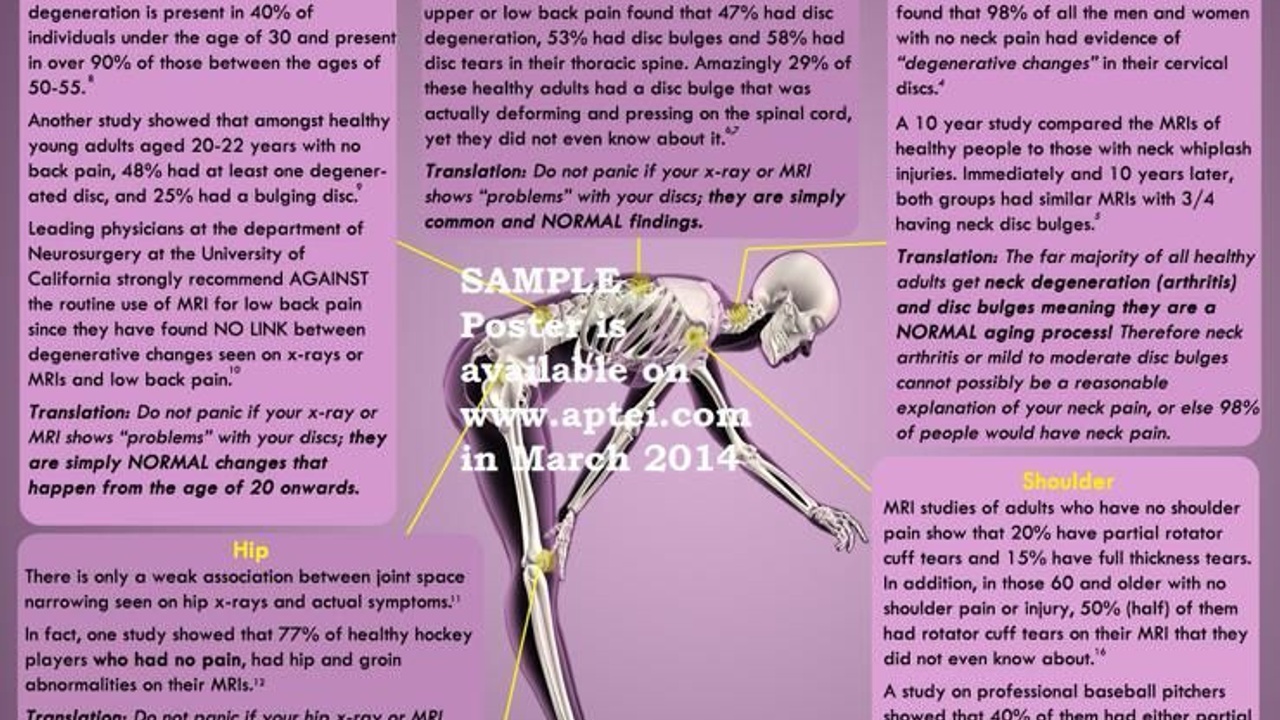
HOW NOT TO BECOME A VOMIT
Oct 29, 2017According to the Advanced Physical Therapy Institute, Canadian patients who received medical imaging results "had more doctor visits, longer-lasting pain, more disability and a lower sense of well-being".
Regarding back pain, MRI's show people with back pain with no musculoskeletal problems and people with disc bulges, disc degeneration and disc tears but no pain.
Although doctors readily order medical imaging to cover their asses in addition to wanting to obtain a clear sightline to any possible spinal pathologies, the truth is that the image does not tell the whole story. It may tell an entirely different story all together.
- Imaging is not an acceptable substitute for comprehensive manual clinical testing done by an orthopedist, osteopath or physio.
- Back sprains and strains do not appear on medical images
- Many images will reveal some age-related wear-and-tear on the spine and surrounding structures but this is not evidence of "damage" which would necessarily cause pain
- Back pain is a complex process, which may involve the structures indicated on the scan, but it may not
- 80% of the pain we experience is process by the limbic system, which means that a lot of what we feel is overblown feedback coming from the nervous system. That includes fear, movement avoidance, deconditioning, pain oversensitization and many other factors.
- Many other subtle spinal changes may not be identified by the radiologist who is tasked with reading your images.
I know what it feels like to be a VOMIT because I chased the wrong diagnosis for 2 years. It cost me thousands of dollars and I was barking up the wrong tree the whole time.
My scans showed scoliosis, disc degeneration, osteoarthritis, a disc herniation, and spondylolisthesis. The clinicians I saw treated the herniation and the spondy, but nothing was helping.
Here's what the radiologist did not report that I am now able to identify on my own scans: Facet joint inflammation, modic changes and endplate fractures in L3, L4, and L5, right side sacroiliac compression.
So get the scans if you have a strong urge to "see for yourself" or if your doctor absolutely requires them, but be prepared for horrible-sounding results which may or may not be the source of your ongoing discomfort.
Yours in health,
Dinneen
DISCLAIMER: This blog is for informational purposes only and is not intended as medical advice. Always consult with your doctor. If you experience pelvic floor numbness, urinary or fecal incontinence, call your doctor or go to the emergency room.

